Preserving winter citrus
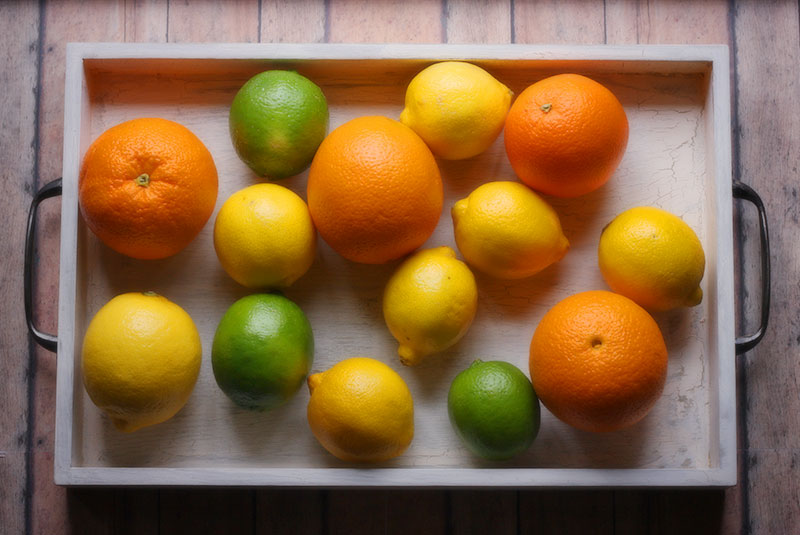
Citrus is proof that Mother Nature loves us dorky humans, despite all the havoc we wreak on her domain.
What’s more perfect in a season of rooty, starchy foods than the flirty orange? Or the sweet-tart Meyer lemon? Or the bright pucker of limes? Just when the winter seems unbearable, painted in unending brown and white, the yellow and orange pyramids pop-up in every grocery store.
It’s impossible to be gloomy when working with citrus. The scent is sunshine and lemonade and umbrella cocktails in the Caribbean, all at once.
I’m mighty grateful for citrus’ winter mood boost, but I admit that I really do miss it come hot weather, when citrus pairs so well with everything summery.
Last year, there were a handful of times when citruses — oranges and limes, specifically — were no where to be found in local stores.
Aside from being an appropriate reminder of just how utterly fortunate I am to live in a country where the expectation of a year-round food supply is readily fulfilled (with only brief gaps in the supply chain — and it was probably just a local snafu, at that), it reinforced for me that, despite global access, in-season food preservation at the household level is worthwhile, important; a knowledge base to be practiced, shared, and passed down.
So while I happily work my way through gloriously inexpensive lemons, limes and oranges, I’ll use some now — oh, who am I kidding? Lots now — and save some for later.
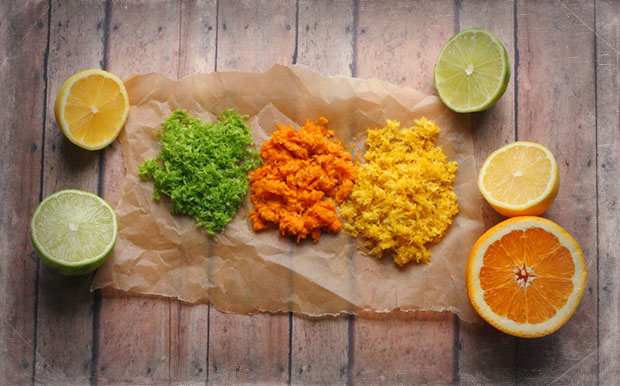
Zest:
Last year, zest was the only bit of citrus I preserved, and I ran through my stash before July could get any kind of foothold. Citrus zest brightens everything, from salad dressings, to dips, to salsas, and guacamoles. Even scones. Of course scones, my love for which borders on the ridiculous. It’s worth having some on hand.
Zest freezes beautifully: zest the fruit with your trusty microplane, place in a container or bag. Freeze.
Freezing flat in a zipper bag lets you break off small chunks at a time. I usually layer mine in a salad-dressing sized reusable container, placing a small scrap of wax paper over new additions. Lemon and lime zests are relatively dry to begin with, and they go from freezer to recipe in one easy step.
Orange zest can sometimes require a bit more effort. The zest from oranges can be quite juicy — in fact, with super fresh oranges, you can actually wring juice out of a palmful of zest. This adds to its marvelous flavor, of course, but often causes it to freeze in a solid clump.
One technique I read about only recently is to freeze the zest in vodka. 60 proof or higher vodka goes slushy in the home freezer, and when mixed with zest, creates a scoopable mix.
I have not tried this yet — I discovered the cheapy vodka I have on hand is only 42 proof, and it freezes solid — but I’m thinking the slushy suspension will not only prevent the clumping, but will also preserve the brightness of the orange zest a little better than a dry freezing. I envision scooping small amounts with a teaspoon and rinsing them briefly to yield perfectly textured and still super flavorful zest.

Peels:
Although I managed to preserve some zest last year, as I mentioned, I wished I had also saved strips of peel — sturdy, but fairly shallow, 1″ wide shavings with minimal pith (easily accomplished with a serrated peeler) — for general purposes.
One of my nearly weekly uses is to eliminate kitchen odors after cooking certain scented comfort-food cuisines or onion-heavy dishes:
Set a small pot with about 2 cups of water to boil. Add 2 or 3 large strips of lemon and/or orange peel, 1 small cinnamon stick, 5 or 6 whole cloves, 5 or 6 allspice berries, and 1 teaspoon of vanilla extract. Reduce heat to maintain the barest simmer. Check the pot every hour to ensure it hasn’t boiled dry, adding more water as necessary.
Strips are also easy to add to (and remove from) sauces, and for the marmalade lovers among you, a bag of peels equals a lovely Saturday afternoon project of orange or lemon preserves.
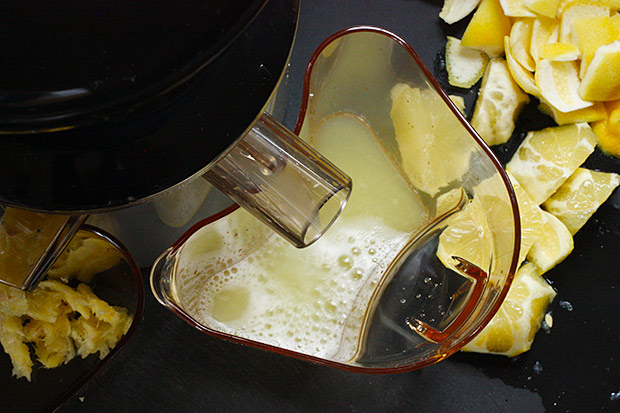
Juice:
I purchased a masticating juicer in early January and knew it would be put to heavy use this winter, thanks in part to citrus. Super affordable mesh bags of lemons and oranges can be had for mere dollars; limes, less than a quarter apiece. Impossible to pass up.
I don’t have enough will-power to store orange juice — no matter how much I process, it’s all consumed by the next morning.
I predict, however, that lemon and lime juice will become a summer staple. I’ve frozen both in tablespoon increments in ice cube trays, and then popped them out and bagged them up. I’m already dreaming of coming in from a sun-scorching turn in the garden and pouring myself a cold, cold glass of water, topped with a lime juice ice cube. And a quick thaw the microwave will yield juice for summer salad vinaigrettes.
Of course you don’t need a juicer to extract juice from citrus. For many years, I used one of those hand-held squeezing gizmos. Not quite as fun if you’re processing citrus in quantity, but in June when you need lime juice for your margaritas, the effort will be a well-faded memory.
Another beauty of preserving citrus for the nature-conscious among us is that it’s a nose-to-tail proposition, so to speak: the entire fruit can be broken down and preserved, with nothing to waste but the bitter pith (marmalade fans: save the membranes and seeds, as they contain natural pectin for thickening your cooked preserves).
And here are some other fabulous citrus-preserving projects worthy of googling if you’ve never done them before:
- Salted lemons (regular or Meyer) for Moroccan and Middle Eastern dishes (from David Lebovitz)
- Sugared Grand Marnier orange peels
- Citrus salts (a nice tutorial from 101cookbooks.com)
- Lemon or lime curd
- Citrus-infused vodkas
- Preserves and marmalades, of course (here’s a blood orange version I made last year on my other blog).
Enjoy the citrus season — it’s all too short!

Comments:
Comments are closed.








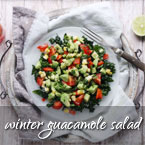
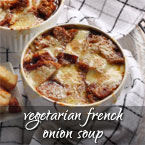


“Citrus is proof that Mother Nature loves us dorky humans” – that is one of the best sayings I have heard in a while. Personally, there is no way I could keep fresh juice around either.
Have you tried dehydrated citrus slices yet? The Martha had one for orange slices dehydrated with sugar, but I wasn’t sure how well they would keep (or what I would do with them).
It’s so funny you bring that up … just this weekend I spied my terribly under-used dehydrator on a shelf in the basement, and thought, I really need to put that to use sometime. I have such an odd blind-spot when it comes to drying foods (except mushrooms and chili peppers). Freezing, I’m all over, but dehydrating … must work on that this year. Dehydrated citrus slices … huh, I’ll have to look that up.
This might be a dumb question, but I’ve never paid too much attention to citrus prices…always buying just 2 or 3 lemons and occasionally a lime. How much more expensive are these citrus fruits in their off seasons?
That’s not dumb at all – there are plenty of things that I just never price out (for good or bad). I’m the world’s worst comparison shopper.
In the off-season, limes usually go for 33 cents each in my area (sometimes 40), while lemons and oranges are often 2 for $1. I remember being quite surprised last year when oranges were hitting the 60 cents each mark (or was it 69 … 60-something, at any rate). Right now, limes are 20-25 cents each; lemons and oranges, 30-33 cents each (if you buy them by the bag). Plus, all the lovely varieties – Cara Cara and blood oranges, Meyer lemons – which aren’t available at any other time.
For me, it’s also a freshness factor, particularly with oranges. Summer oranges seem to come from Africa, and, compared to our winter oranges, they look like they’ve traveled every inch of that journey across the ocean, often dried out at the stem end. And, it’s hard to find good juice oranges in the summer – around here, all you find are Navels, which are fine for eating, but they’re not good juicers.
Adore the refreshing citrus photos on this dreary cold afternoon!
It was the best photo session ever, with the room completely flowered in citrus scent.